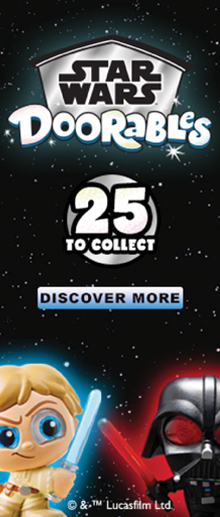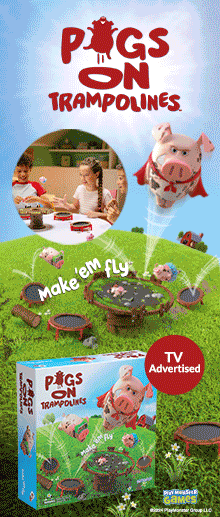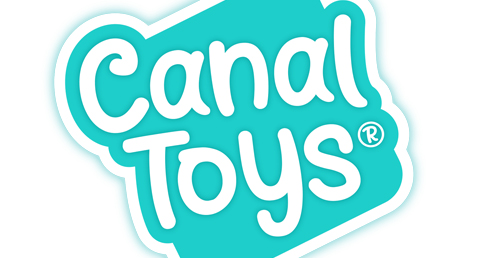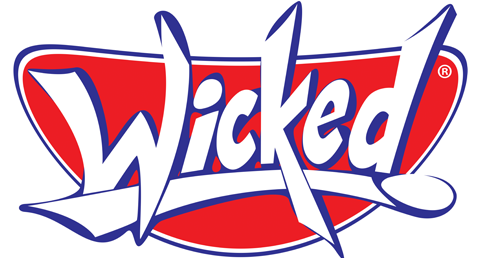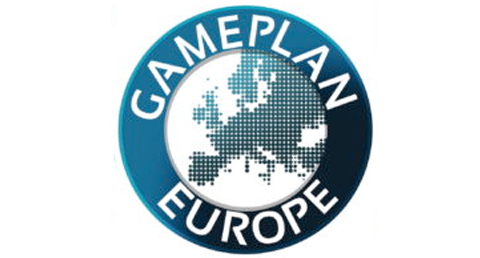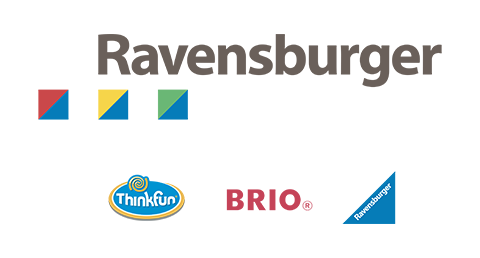 If you think of Toy Fair Season as the business equivalent of a four-lap 1500m running race (Hong Kong, London, Nuremberg and New York), many of us have just finished the first lap. Like many races, the pace is set on the first lap – by the time you head home, you start to get a sense of how the year is shaping up. As anyone who has spent time in the toy trade will know, we are on the whole an optimistic, glass half-full bunch. And even in the wake of one of the more turbulent trading years that many have faced for a while, that optimism is still there. More measured perhaps, tempered by the events of the past few months – certainly no-one is getting carried away, but equally, no-one seems overly despondent.
If you think of Toy Fair Season as the business equivalent of a four-lap 1500m running race (Hong Kong, London, Nuremberg and New York), many of us have just finished the first lap. Like many races, the pace is set on the first lap – by the time you head home, you start to get a sense of how the year is shaping up. As anyone who has spent time in the toy trade will know, we are on the whole an optimistic, glass half-full bunch. And even in the wake of one of the more turbulent trading years that many have faced for a while, that optimism is still there. More measured perhaps, tempered by the events of the past few months – certainly no-one is getting carried away, but equally, no-one seems overly despondent.
What we did see last year was a market in the throes of major change. Was it a blip year, or have the goalposts shifted permanently? We’ll know more as the year unfolds, but I suspect that people are planning for further unpredictability and more preconceptions to be challenged. Never has a flexible, nimble, pro-active (and reactive) approach been more important. There were winners and losers in 2017, as there will be this year, and those suppliers and retailers who are able to adapt quickly to the prevailing conditions will retain a competitive advantage over the ‘big ships’ that take longer to turn.
Innovation and own IP development is key; it is no longer enough to rely solely on a licence or big movie. I have heard of retailers specifically searching out innovation at the expense of licensed merchandise – no great surprise when you look at last year’s big winners (fidget spinners, Fingerlings, LOL Surprise!). The established, successful licensed properties will be fine – but those that aren’t at the forefront of their category may find it harder to make headway this year.
Scale is no guarantee of success. I hear that Poundworld’s tie-up with Li and Fung has been little short of a disaster, and the partnership is likely to dissolve soon. Likewise, just because a licensed property or movie is ‘big’ (in the traditional sense), it doesn’t mean it will translate into a successful proposition for licensees and retailers. Some tell me they have experienced more success with left-field properties than with the more mainstream brands.
Trading patterns are also evolving. Last Christmas was late – very late. So much so that retailers are suggesting that suppliers will have to rethink their traditional logistics schedule – shutting down warehouse and distribution facilities in the first week of December is an approach that may need to be revisited if 2018 sees a repeat of the 2017 pattern.
Retailers are becoming no less demanding: even if it costs five times more for a supplier to deliver goods at 2 am on a Sunday than it does on a Friday afternoon, or to repack and specifically label goods for every individual account, failure to comply only ends one way. Online sales will continue to put immense pressure on bricks and mortar. So much so that even Amazon’s buying function becoming even more automated – with buyers reduced largely to data input clerks – is unlikely to have the same impact it would if a physical retailer adopted the same approach. With bricks and mortar, a retailer with a passionate, visionary, hands-on owner with excellent commercial acumen driving the business (think Smyths, The Entertainer, B&M) appears to have a huge advantage over the more corporate retail operations in the current climate. Conversely, in the online sphere, Amazon’s ‘Skynet’ approach hasn’t impeded its voracious growth (yet).
While much is changing, some traditional toy trade behaviours linger. TRU has been asking suppliers for extended terms (but of course). Despite the growth in digital and online marketing activity, TV remains the key driver when it comes to delivering tangible sales increases: one company told me that as soon as a campaign switched from its initial TV phase into the follow-up digital phase, sales literally plummeted. It doesn’t mean that digital activity shouldn’t form an integral part of the mix, but rarely can it ‘carry the weight’ of a campaign on its own, save for a few exceptional circumstances – everyone gets lucky once in a while. Influencers are becoming an increasingly controversial channel; with costs of high-profile stars spiralling out of control, not to mention the ethical dilemmas of kids being exploited and the tacky, vulgar nature of some of the content, those retailers who are currently fixating on influencer activity at the expense of more traditional marketing strategies may soon need to reconsider their stance.
As Keane once sang, “Everybody’s changing and I don’t feel the same.” That may apply to the toy trade right now, but it also seems to me that the companies which embrace these changes will be the ones best-placed to keep moving forward. From what I can see, most people are not just sitting there and moaning about it – they’re getting on with working out the best way to ride the waves (and as someone who has spent over three decades in the business, I can promise you that it wasn’t always like this). If anything typifies this new spirit of ripping up the rule book, it is the merger of TV commercial production companies Mark TV and Diaframma. For over 40 years, these two family-owned companies – based in the same city – have been fierce rivals, rather like a toy trade version of the Monatgues and Capulets. Now they have merged to form a stronger operation, ready to face the challenges that the advertising production sector is throwing at them. If you’d have told me a year ago that they were going to merge, I would never have believed you. But right now, nothing is off limits – providing, of course, it is the right thing to do.
And, crucially, we’re facing the challenges together, as a community. On Tuesday night, over 340 people from the UK toy contingent (and a selected few international guests) came together at the Fence Club football match, raising money and having a great night. The 1-1 result – while a rare triumph for the UK team – didn’t matter as much as the fact that we could get such a huge group in one place at one time (credit to David Bramford, Joe Kissane, John Langley and everyone involved for their sterling work). No other international territory does anything remotely like this: it’s testament to the close-knit nature of the UK toy community that we can put on an event of this magnitude. It’s this spirit of togetherness which will serve us well in the coming months, because I suspect 2018 will be no less of a rollercoaster ride than 2017. Buckle up!
There will be a final Hong Kong Blog early next week, featuring some of the innovative new ranges and product developments I’ve seen during my trip. I’m off to get in training for the second lap – London Toy Fair. See you there.




